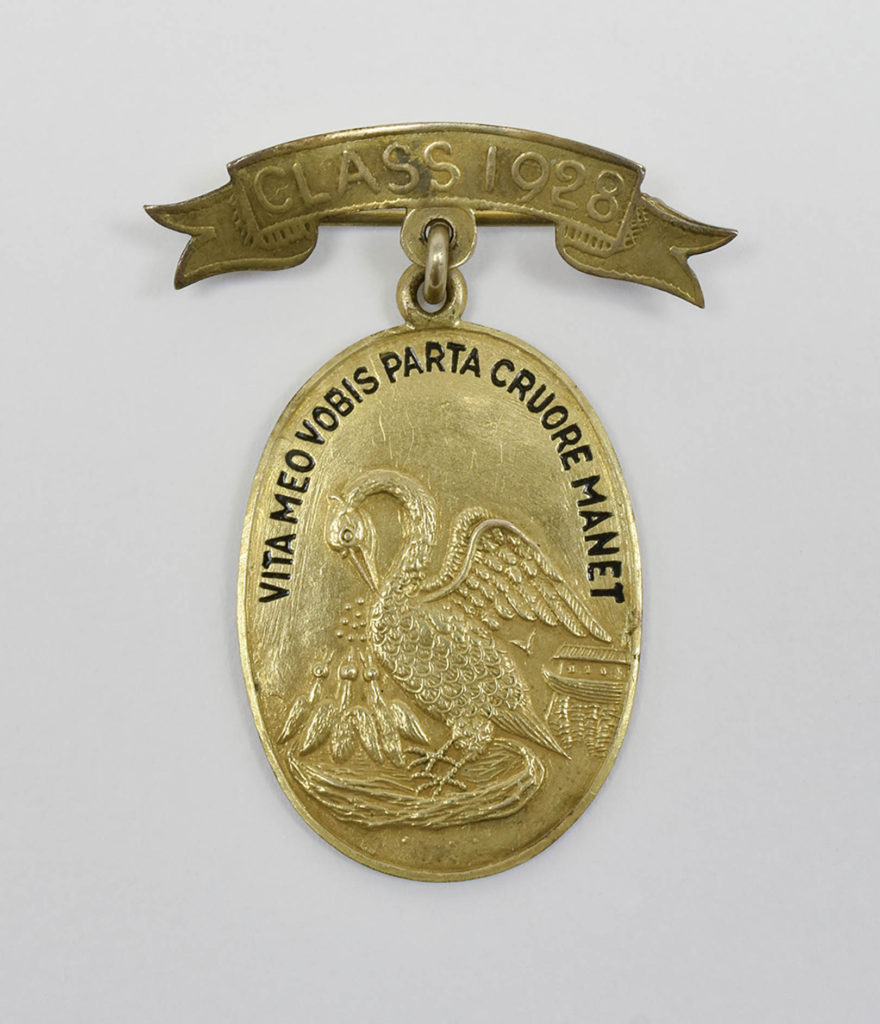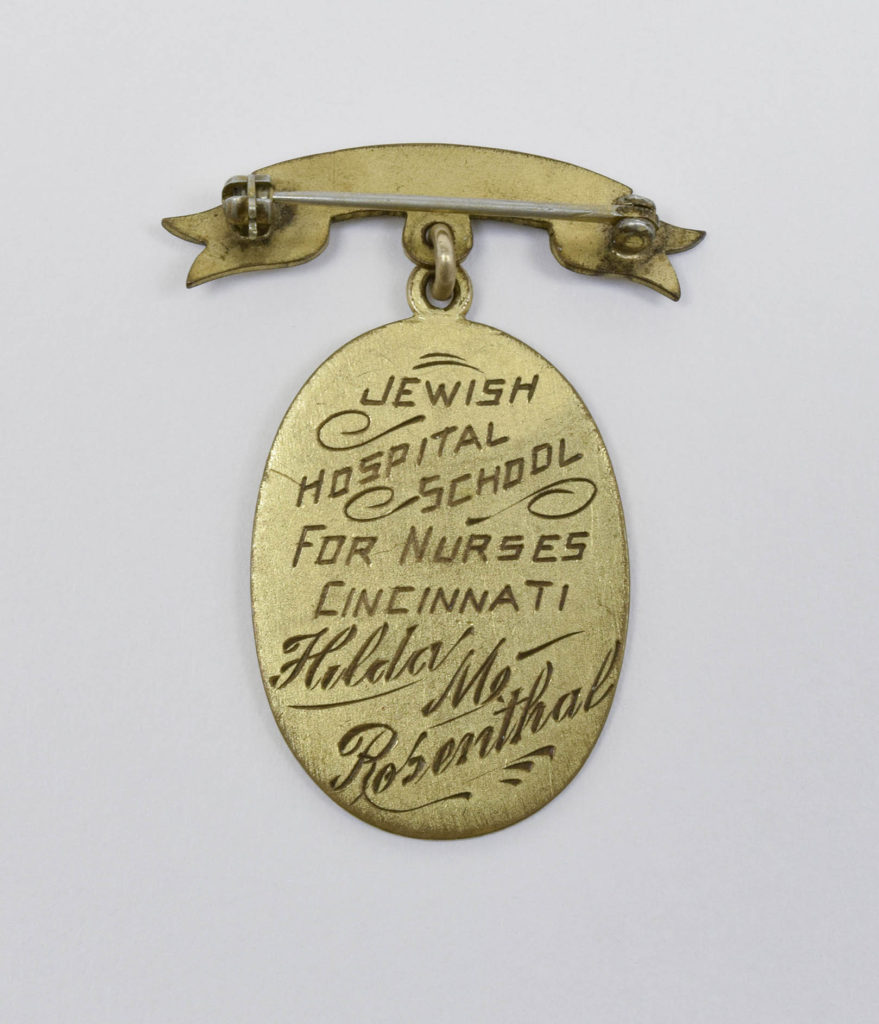Cincinnati Jewish Hospital Nurse’s Pin
Moses Jacob Ezekiel (Richmond, VA 1844-1917 Rome, Italy)
Cincinnati, 1912
Gold, h. 2 in. x w. 1 in.
Inscriptions: obverse: Vita Meo Vobis Parta Cruore Manet; reverse: H.R.N. 1928
Cincinnati Skirball Museum, gift of Joellen and Morton Spitz in memory of Hilda Rosenthal Nathan, class of 1928, 70.234
In 1893, Jeptha Workum (1860-1896) presented each of three nurses of the first graduating class of Jewish Hospital’s School of Nursing with a gold medal designed by his uncle, Moses Jacob Ezekiel. Jeptha was one of nine children of Levi and Hannah Ezekiel Workum. Hannah was the eldest sister of Moses Jacob Ezekiel. The Workum family has a long tradition of service and philanthropy in the Jewish and secular community of Cincinnati. The Jewish Hospital was founded in 1850, when a cholera epidemic sickened thousands of Cincinnatians. The first Jewish hospital in the United States, it initially provided care for the indigent poor sick of the Jewish faith.
Ezekiel’s pin was reproduced for several generations of Jewish Hospital Nursing School graduates. It depicts a mother pelican feeding her young. This symbolism is rooted in an ancient legend, which preceded Christianity. The legend was that in time of famine, the mother pelican wounded herself, striking her breast with her beak to feed her young with her blood to prevent their starvation. Another version of the legend was that the mother fed her dying young with her own blood to revive them from death, but in turn lost her own life. The same symbol appears on the coat of arms of the Royal Infirmary of Edinburgh, founded in 1729. Miss Annie Murray, Superintendent of the Training School for Nurses at Cincinnati General Hospital, who was a graduate of the Edinburgh School, may have suggested the design of the Jewish Hospital Nursing School pin to Ezekiel.
The inscription over the pelican design, freely translated from the Latin, reads: Life is saved for you by the blood which I have given.


